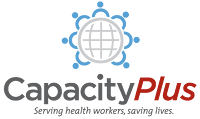Namibia
Strengthening Tactical Planning and Operational Frameworks for Vector Control: The Roadmap for Malaria Elimination in Namibia
Namibia has made tremendous gains in malaria control and the epidemiological trend of the disease has changed significantly over the past years. In 2010, the country reoriented from the objective of reducing disease mor bidity and mortality to the goal of achieving malaria elimination by 2020. This manuscript outlines the processes undertaken in strengthening tactical planning and operational frameworks for vector control to facilitate expeditious malaria elimination in Namibia. [from abstract]
- 845 reads
Barriers to Accessing Health Care Services for Children With Disabilities in Southern Africa: The Case of Namibia
The review found out that the barriers to access occur when the density of health care facilities is low and in settings where the transportation system, road networks and infrastructure is poor. Most of the studies under review further noted that even in cases where health services are well distributed and available other factors act as barriers to access. [from abstract]
- 747 reads
An Investigation of Staff Turnover at a Private Healthcare Provider in the Kavango Region, Namibia
The study sought to investigate the factors contributing to the high turnover of clinical staff at two Catholic Health Services (CHS) hospitals of Andara and Nyangana in the Kavango region of Namibia. The conceptual framework, factors related to the decision to stay in or leave rural and remote areas, was adapted from Henderson and Tulloch (2008) and guided this study. [from abstract]
- 654 reads
Applying the Workload Indicators of Staffing Need (WISN) Method in Namibia: Challenges and Implications for Human Resources for Health Policy
As part of ongoing efforts to restructure the health sector and improve health care quality, the Ministry of Health and Social Services (MoHSS) in Namibia sought to update staffing norms for health facilities. To establish an evidence base for the new norms, the MoHSS supported the first-ever national application of the Workload Indicators of Staffing Need (WISN) method, a human resource management tool developed by the World Health Organization. [from abstract]
- 1040 reads
Human Resources and Capacity Gap Analysis: Improving Child Welfare Services
This analysis was conducted with the overall purpose to review the roles and responsibilities of the Ministry staff, including social workers and record clerks at national and regional level, and ascertain the capacity gaps that hinder fulfillment of their obligations towards children and women in the context of the HIV and AIDS pandemic in Namibia. [from introduction]
- 1180 reads
Connecting Regions, Leading the Way: Sharing Health Worker Information in Namibia
Information on a country’s health workers is essential for planning and decision-making. The Capacity Project met with key decision-makers in Namibia to assess their information needs. This document describes the outcome and its impact on the Namibian health workforce. [adapted from author]
- 1706 reads
Factors Affecting Performance of Professional Nurses in Namibia
This study explores the factors that affect performance of nurses in Namibia with the aim of providing a management framework for improving the performance of professional nurses. [from author]
- 10246 reads
Implementing a Community-Based Tuberculosis Program in the Omaheke Region of Namibia: Nurses' Perceived Challenges
The purpose of this survey was to identify nurses' perceived challenges in implementing a community-based TB program in the Omaheke region of Namibia. The HIV pandemic has increased the number of TB patients and increased nurses' workloads, aggravating the burden of TB as a resurgent disease in this region. In order to implement a successful community-based TB program, the patient-related, access-related and knowledge-related challenges, perceived by the nurses, need to be addressed effectively. [from abstract]
- 17026 reads
Guideline for Outsourcing Human Resources Services to Make Antiretroviral Therapy Rapidly Available in Underserved Areas
This is a guideline to replicate and scale-up a human resources promising practice documented by the Capacity Project for outsourcing human resources services (HRS) to obtain a rapid increase and deployment of the health workforce, making HIV services available in a short period of time, especially in underserved areas.
- 19236 reads
Strategy for the Rapid Start-Up of the HIV/AIDS Program in Namibia: Outsourcing the Recruitment and Management of Human Resources for Health
In response to the HIV/AIDS crisis, Namibia’s public health sector is carrying out a comprehensive strategy to rapidly hire and deploy professional and non-professional health workers with the aim of providing comprehensive care, counseling and testing, as well as antiretroviral therapy (ART) and prevention of mother-to-child transmission (PMTCT). [from executive summary]
- 27395 reads
Addressing the Human Resource Crisis: a Case Study of the Namibian Health Service
This paper addresses an important practical challenge to staff management. We use a case study based on semi-structured interview data to explore the steps that Namibia, a country facing severe health problems that include an alarmingly high AIDS infection rate, has taken to manage its health workers. [from abstract]
- 4012 reads
Perceptions of Health Workers about Conditions of Service: a Namibian Case Study
This study was implemented as part of the EQUINET theme work on Human Resources for Health coordinated by Health systems Trust. The study set out to explore and describe the influence of conditions of service on the movement and retention of the health professionals in Namibia. It is a qualitative study targeting mainly professional nurses, doctors, social workers and health inspectors at both operational and managerial levels, in public and private sectors. [from executive summary]
- 2760 reads




